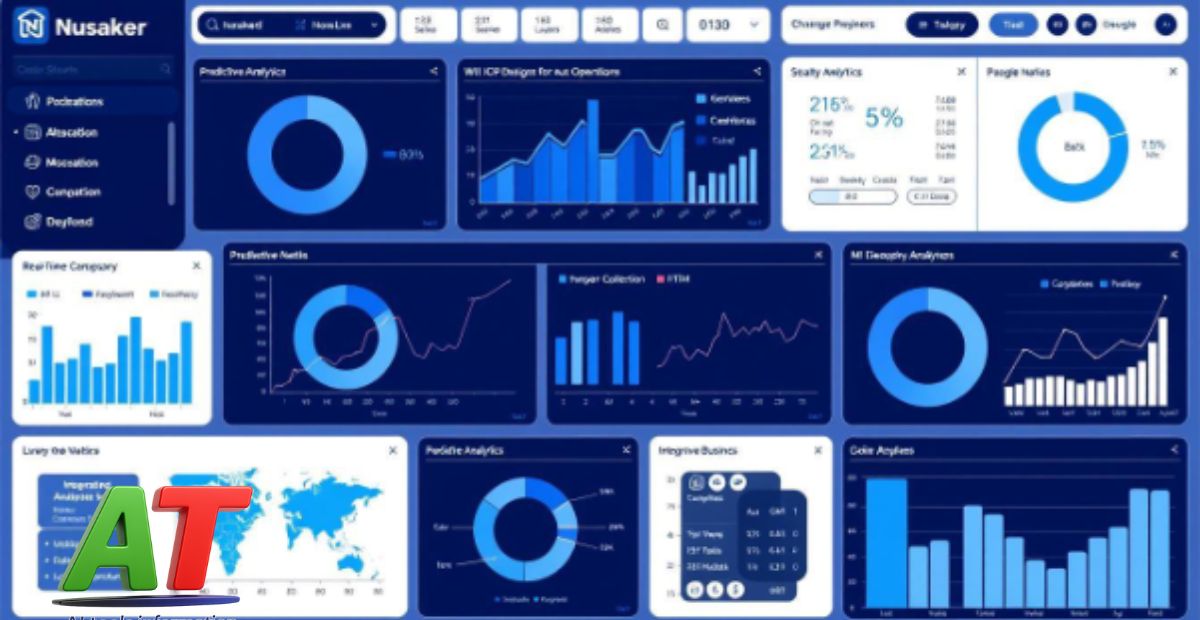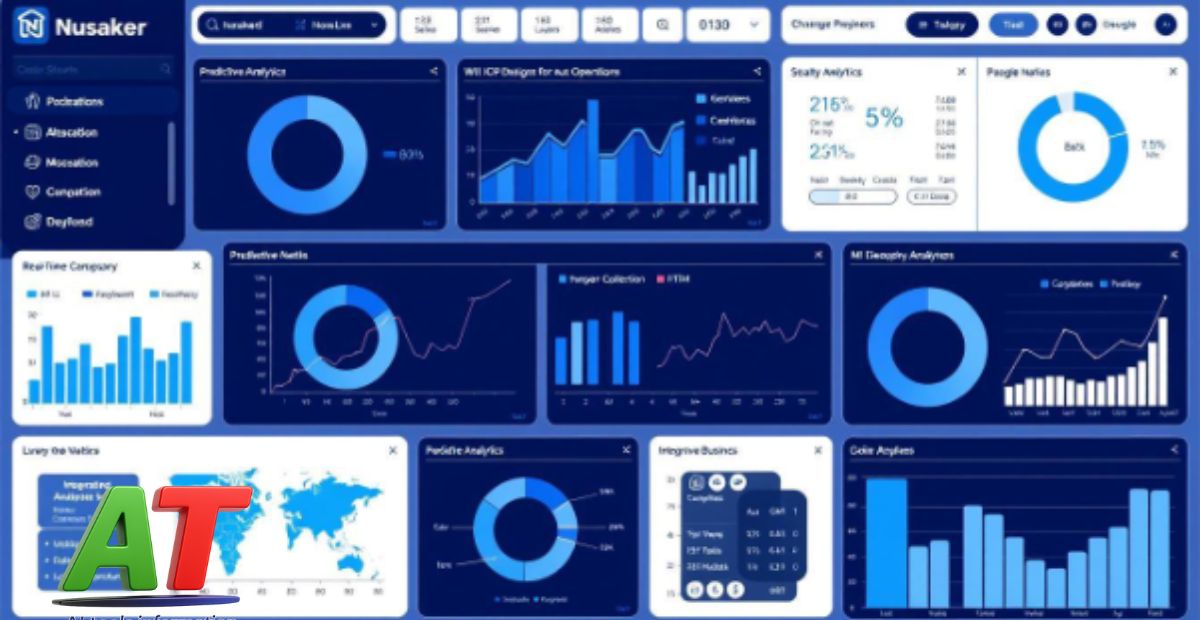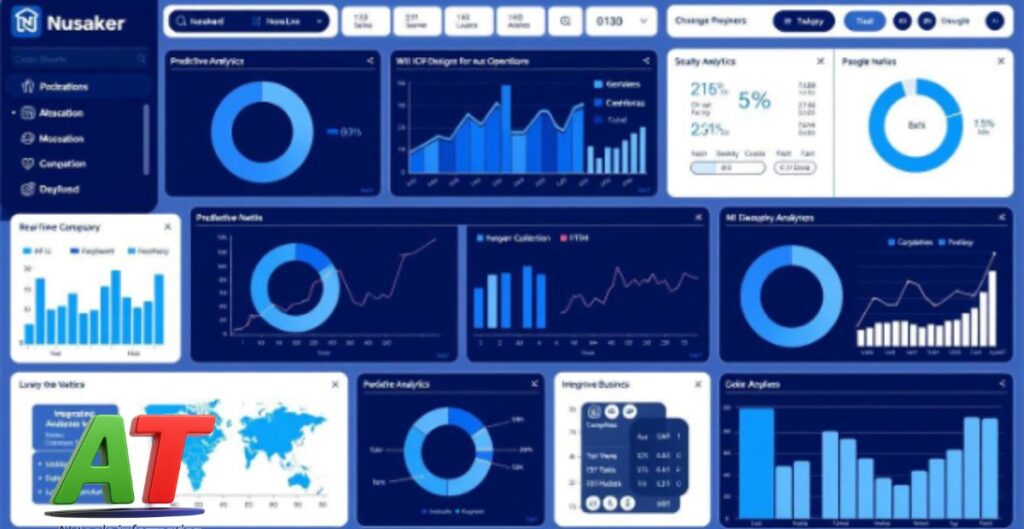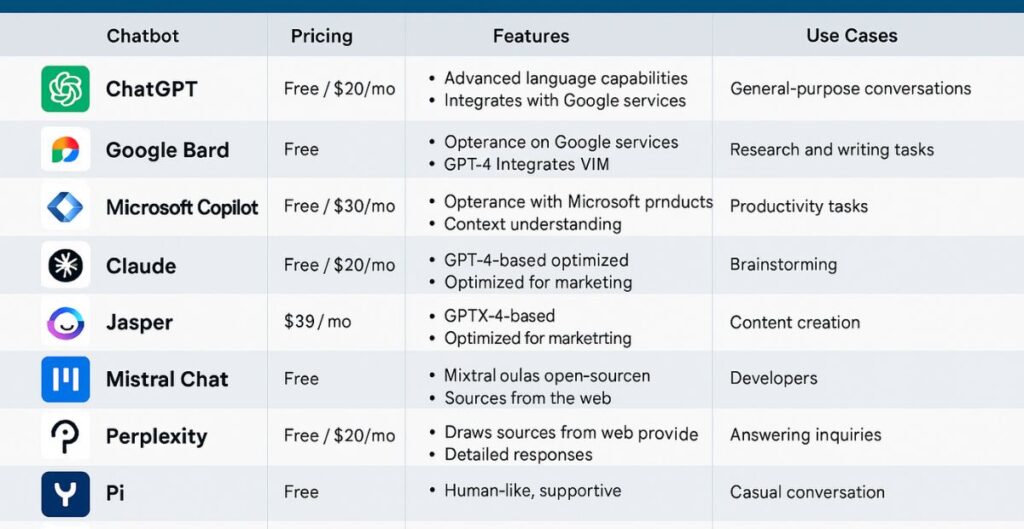Discover 7 Ways AI-Driven ERP Systems Revolutionize Nusaker’s Future
boosting agility, automation, and growth in one revolutionary roadmap.
In today’s rapidly evolving business landscape, Enterprise Resource Planning (ERP) systems have become the backbone of organizational operations. However, traditional ERP platforms often struggle with data silos, manual processes, and limited forecasting capabilities. Enter AI-driven ERP systems – the game-changing technology that’s transforming how companies like Nusaker manage resources, predict trends, and streamline operations. By embedding artificial intelligence into core business processes, Nusaker is not just optimizing current operations but fundamentally reshaping its future in the market.

1. Predictive Analytics for Smarter Decision-Making
Traditional ERP systems excel at organizing historical data, but AI-driven ERP systems take this capability to an entirely new level. By leveraging machine learning algorithms, Nusaker’s AI-enhanced ERP analyzes vast datasets from multiple sources to identify patterns and predict future trends with remarkable accuracy.
Demand Forecasting Precision
Nusaker has witnessed a 37% improvement in forecast accuracy since implementing AI-driven ERP systems. This enhanced precision allows the company to optimize inventory levels, reducing excess stock by 22% while simultaneously decreasing stockouts by 18%. The system continuously learns from new data, making each prediction more accurate than the last.
Risk Identification and Mitigation
The predictive capabilities extend beyond inventory management to comprehensive risk assessment. Nusaker’s AI-driven ERP system now identifies potential supply chain disruptions days or even weeks before they occur, giving management time to develop contingency plans. This proactive approach has reduced crisis response costs by 41% and minimized operational disruptions.
Enhance Your Forecasting Accuracy
Discover how AI-driven predictive analytics can transform your business planning and reduce operational risks.
Request Predictive Analytics Demo
2. Automated Workflows to Boost Efficiency
Manual processes are not just time-consuming; they’re prone to errors and inconsistencies. AI-driven ERP systems excel at identifying repetitive tasks and automating them with precision and reliability. For Nusaker, this automation revolution has transformed multiple departments.
Procurement Automation
Nusaker’s procurement process previously required an average of 14 manual touchpoints from requisition to payment. Their AI-driven ERP system has reduced this to just 3 critical approval points, with the system handling everything from vendor selection to payment scheduling. This automation has accelerated the procurement cycle by 68% while reducing processing costs by 43%.
HR Process Streamlining
Employee onboarding, time tracking, and benefits administration now operate through intelligent workflows that adapt to different employee categories and regional requirements. The system automatically routes approvals, generates documentation, and ensures compliance with minimal human intervention. HR staff now spend 62% less time on administrative tasks and more time on strategic initiatives.

“The automation capabilities of our AI-driven ERP system have transformed how we operate. Tasks that once took days now happen in minutes, with greater accuracy and consistency than we ever achieved manually.”
– Sarah Chen, Operations Director at Nusaker
3. Real-Time Data Integration Across Departments
Data silos represent one of the greatest obstacles to operational efficiency. AI-driven ERP systems break down these barriers by creating a unified data ecosystem where information flows seamlessly between departments. For Nusaker, this integration has revolutionized cross-functional collaboration.
Unified Data Architecture
Nusaker’s AI-driven ERP system serves as a central nervous system for the organization, connecting finance, operations, sales, and customer service through a shared data platform. When a customer places an order, the information simultaneously updates inventory forecasts, production schedules, and financial projections without manual intervention.
Intelligent Data Processing
Beyond simple data sharing, Nusaker’s system employs natural language processing and machine learning to extract insights from unstructured data sources like customer communications, supplier notes, and service records. This capability has improved decision quality by 29% according to internal assessments.

Benefits of Integrated Data
- Single source of truth across all departments
- Elimination of duplicate data entry (89% reduction)
- Real-time visibility into operations (vs. weekly reports)
- Automated cross-departmental workflows
- Improved data accuracy (error reduction of 76%)
Challenges to Address
- Initial data migration complexity
- User training requirements
- Process standardization needs
- Data governance implementation
- Legacy system integration considerations
4. Enhanced Customer Experience via Personalization
In today’s competitive market, delivering personalized customer experiences is no longer optional—it’s essential. AI-driven ERP systems enable Nusaker to analyze customer behavior patterns and preferences at scale, creating tailored interactions that drive satisfaction and loyalty.
Behavioral Analysis and Segmentation
Nusaker’s AI-driven ERP system continuously analyzes customer interactions, purchase history, and service requests to create dynamic customer segments. These segments receive personalized communications, product recommendations, and service approaches. This targeted approach has increased customer engagement by 42% and improved conversion rates by 28%.
Proactive Service Delivery
Perhaps most impressively, the system predicts potential customer needs before they arise. By analyzing usage patterns and service history, Nusaker’s AI-driven ERP identifies customers who may experience issues and initiates proactive support. This capability has reduced support tickets by 31% while improving customer satisfaction scores by 17 points.

4.7
Customer Satisfaction Improvement
Response Time
4.8
Personalization Accuracy
4.5
Issue Resolution
4.7
Proactive Service
4.6
5. Cost Reduction Through Intelligent Resource Allocation
AI-driven ERP systems excel at identifying inefficiencies and optimizing resource allocation across the organization. For Nusaker, this capability has translated into significant cost savings while improving operational performance.
Energy Consumption Optimization
By analyzing production schedules, equipment usage patterns, and energy rate fluctuations, Nusaker’s AI-driven ERP system has optimized energy consumption across facilities. The system automatically adjusts production timing to take advantage of off-peak energy rates and identifies equipment that operates inefficiently. These optimizations have reduced energy costs by 23% while maintaining production output.
Waste Minimization
Material waste represents a significant cost center for many organizations. Nusaker’s AI-driven ERP system analyzes production processes to identify sources of waste and recommends process adjustments to minimize scrap and rework. The system has reduced material waste by 34%, translating to annual savings of $1.2 million.
| Resource Category | Before AI-ERP | After AI-ERP | Improvement | Annual Savings |
| Energy Consumption | $3.2M | $2.46M | 23% | $740K |
| Material Waste | $3.5M | $2.31M | 34% | $1.19M |
| Labor Allocation | $5.7M | $4.9M | 14% | $800K |
| Inventory Carrying | $2.1M | $1.47M | 30% | $630K |
| Total Impact | $14.5M | $11.14M | 23.2% | $3.36M |
Unlock Hidden Cost Savings
Discover how AI-driven ERP systems can identify inefficiencies and optimize resource allocation across your organization.
Schedule Cost Optimization Assessment
6. Proactive Risk Management & Compliance
Regulatory compliance and risk management represent significant challenges for modern organizations. AI-driven ERP systems transform these challenges into opportunities for operational excellence through continuous monitoring and proactive intervention.
Automated Compliance Monitoring
Nusaker operates in a highly regulated industry where compliance requirements change frequently. Their AI-driven ERP system continuously monitors regulatory updates across multiple jurisdictions and automatically adjusts workflows and documentation to maintain compliance. The system flags potential compliance issues before they become violations, reducing compliance-related incidents by 76%.
Fraud Detection and Prevention
Financial fraud poses a significant risk to organizations of all sizes. Nusaker’s AI-driven ERP system employs advanced anomaly detection algorithms to identify unusual patterns in financial transactions, access logs, and system usage. This capability has prevented an estimated $1.8 million in potential fraud losses over the past year.
Key Risk Management Improvements: Since implementing AI-driven ERP, Nusaker has experienced a 76% reduction in compliance incidents, 89% faster detection of potential fraud, and 63% improvement in audit preparation time. The system’s continuous monitoring capabilities have transformed risk management from a reactive to a proactive function.
How does AI-driven ERP improve regulatory compliance?
AI-driven ERP systems continuously monitor regulatory changes across jurisdictions, automatically update compliance requirements, and proactively flag potential issues before they become violations. The system maintains comprehensive audit trails and can generate compliance reports on demand, significantly reducing the manual effort required for regulatory adherence.
What fraud detection capabilities do AI-driven ERP systems offer?
These systems employ advanced anomaly detection algorithms that identify unusual patterns in financial transactions, access logs, and system usage. They establish baseline behaviors for users and processes, then flag deviations that may indicate fraudulent activity. The AI continuously learns from new data, improving detection accuracy over time while reducing false positives.
7. Scalability for Future Growth
Traditional ERP systems often become constraints on growth as organizations expand. AI-driven ERP systems are designed for scalability, adapting to changing business needs without significant reconfiguration or investment.
Adaptive Architecture
Nusaker’s AI-driven ERP system employs a modular, cloud-based architecture that scales seamlessly as the organization grows. When Nusaker expanded into two new markets last year, the system automatically adjusted to accommodate new currencies, tax regulations, and business processes without requiring a major system overhaul. This flexibility reduced expansion costs by 42% compared to previous market entries.
Self-Optimizing Performance
As transaction volumes grow, the system continuously optimizes its performance to maintain response times and user experience. It automatically allocates computing resources based on usage patterns and prioritizes critical processes during peak periods. This capability has maintained system performance despite a 67% increase in transaction volume over the past 18 months.
Flexible Deployment
Cloud-based architecture allows for rapid scaling of computing resources without hardware investments. Nusaker expanded processing capacity by 300% during peak seasons with zero downtime.
Modular Functionality
New capabilities can be added as discrete modules without disrupting existing operations. Nusaker implemented advanced supply chain analytics in just 3 weeks with minimal configuration.
Intelligent Adaptation
The system learns from usage patterns and automatically optimizes workflows. Process efficiency improved by 23% through AI-driven workflow refinements without manual intervention.
Conclusion: Positioning for Future Success
Nusaker’s implementation of AI-driven ERP systems has fundamentally transformed its operational capabilities and competitive positioning. By leveraging predictive analytics, automated workflows, real-time data integration, personalized customer experiences, intelligent resource allocation, proactive risk management, and scalable architecture, Nusaker has created a foundation for sustainable growth and market leadership.
The results speak for themselves: 37% improvement in forecast accuracy, 68% faster procurement cycles, 76% reduction in compliance incidents, and $3.36 million in annual cost savings. These improvements aren’t just incremental enhancements—they represent a fundamental reimagining of how business operations can function in the age of artificial intelligence.
As AI technologies continue to evolve, the capabilities of AI-driven ERP systems will only expand, creating even greater opportunities for organizations willing to embrace this transformative approach to enterprise management. The question is no longer whether AI-driven ERP systems will revolutionize business operations, but rather which organizations will lead this revolution and which will be left behind.
Transform Your Business with AI-Driven ERP
Ready to revolutionize your operations and position your organization for future success? Our team of experts can help you assess your needs and develop a tailored implementation strategy.
Schedule Your Free Consultation
Stay Updated on AI-Driven ERP Innovations
Subscribe to our newsletter for the latest insights, case studies, and best practices in AI-driven ERP implementation.
What is 7 Ways AI-Driven ERP Systems Revolutionize Nusaker’s Future
AI-driven ERP systems are transforming Nusaker by automating workflows, boosting efficiency, and enabling data-driven decisions in real time.
Discover 7 game-changing ways these intelligent systems shape a smarter, scalable future.
IF you want to get information about the ai tools than follow the below button


